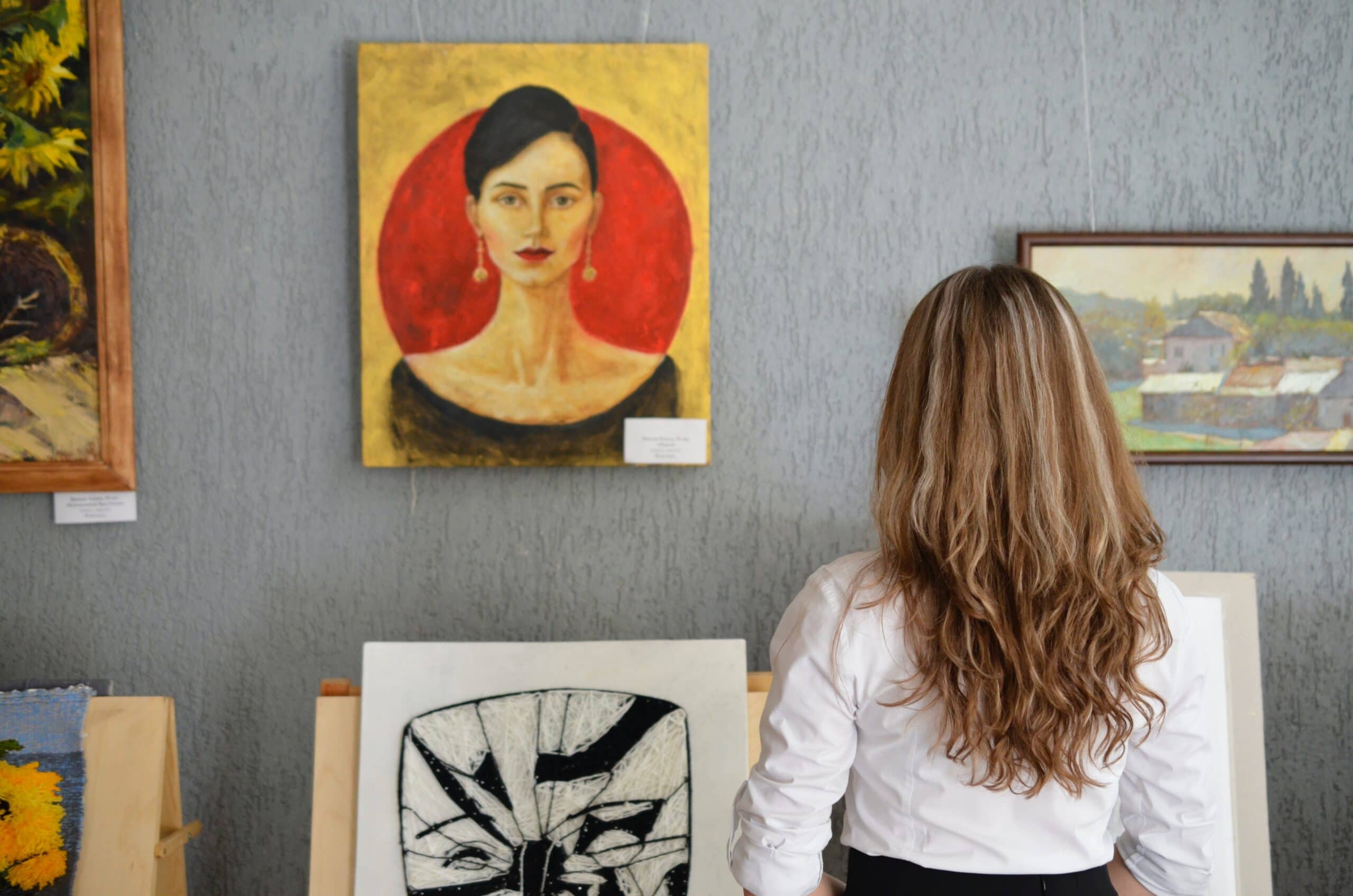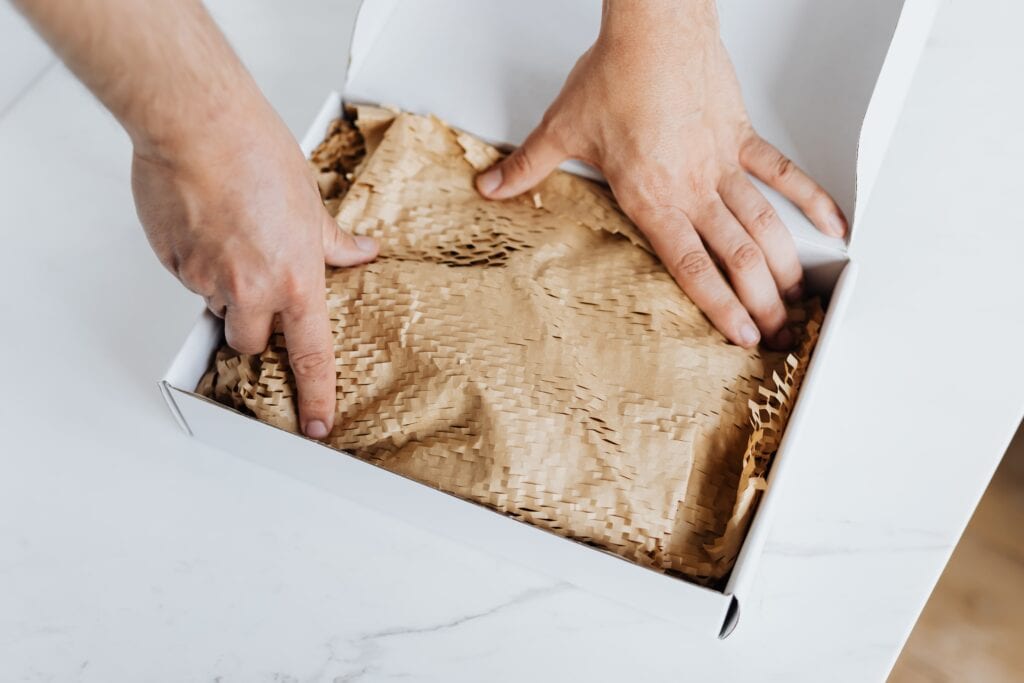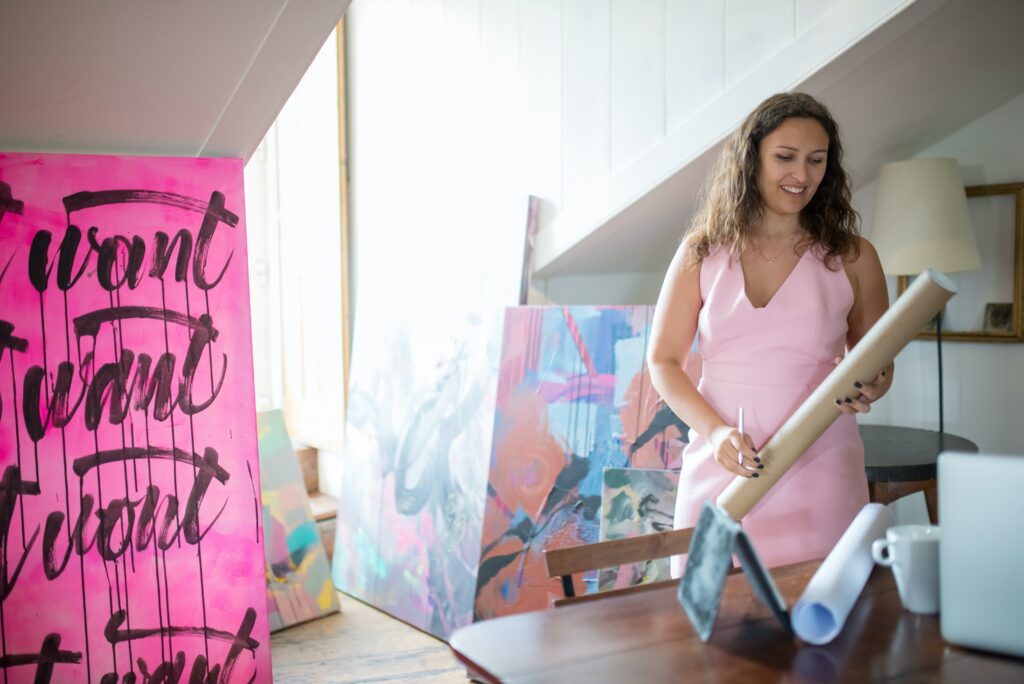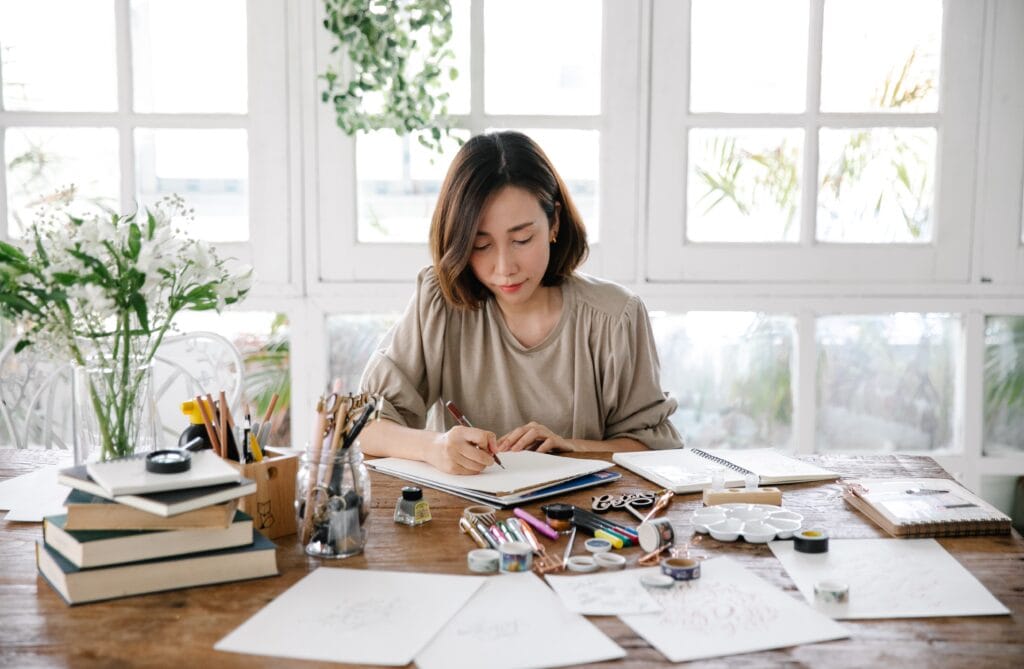As a fine artist, creating stunning artwork is only one part of the equation for success in the art business industry.
In order to get your work noticed by galleries and potential clients, you need to craft a concise and captivating artist portfolio. Your portfolio is your chance to showcase your artistic skills and creativity, and it’s essential to make sure it’s well-crafted and visually appealing.

Welcome to the ultimate guide on crafting a professional artist portfolio that will help you stand out in the highly competitive art industry. We will cover everything you need to know, from the benefits of digital portfolios to what gallery owners are searching for.
Whether you’re an expert or a novice looking to take your career to new heights, we’ll guide you through creating a portfolio that highlights your unique talent and style.
So, let’s get started!
The Artist Portfolio and Why You Need It
Your creative vision deserves to be showcased in the best possible way. This is where the power of an artist portfolio comes in.
It’s a carefully curated collection of your best works featuring various forms of art, such as paintings, sculptures, photographs, illustrations, or digital designs. When presented in a cohesive and visually appealing manner, it becomes a powerful tool to impress potential clients, galleries, or employers and sets you apart in a highly competitive industry.
With an exceptional artist portfolio, you can showcase your unique style and artistic voice while highlighting your versatility and technical abilities.
So, if you’re ready to take your art career to the next level, it’s time to invest time and effort into creating an outstanding artist portfolio that accurately represents your talents and aspirations.
From Paper to Pixels: Why Digital Portfolios are Taking Over

Showcasing your work to galleries can be a challenge. In today’s digital age, creating a digital artist portfolio is key.
You can easily create an effective digital portfolio by using a program like PowerPoint or Apple Keynote to showcase your images, titles, sizes, and prices.
Once you’ve created your portfolio, output it as a PDF and attach it to an email, upload it to an iPad, or print it as a booklet using an online printer.
Using a digital portfolio gives you flexibility in terms of updating and sharing your work.
Even if a gallery is not accepting submissions, sending your digital portfolio can’t hurt and may lead to future opportunities. Be sure to include a separate PDF with your bio, artist statement, and resume to make it easy for gallery owners to review your work.
Digital Portfolio vs Website Portfolio
A website portfolio is a collection of an artist’s work that is displayed on their personal website, providing a comprehensive look at their body of work and artistic style to a broad online audience. It often includes a variety of artwork, artist statements, bios, and contact information.
While a digital portfolio is designed specifically for submitting to galleries with a focused selection of an artist’s best work, a website portfolio can serve as a valuable marketing tool for artists looking to reach potential buyers and collectors online.
A website portfolio can also be a great tool for reaching a broad audience, but it’s important to note that a digital portfolio should be created as a separate entity. The best format for a digital portfolio is (you guessed it!) PDF, which provides better control over the viewing experience and allows for easy sharing with galleries.
By creating a well-curated digital portfolio, artists can increase their chances of getting their work displayed in galleries and reaching a wider audience.
What Gallery Owners Want to See in Your Portfolio
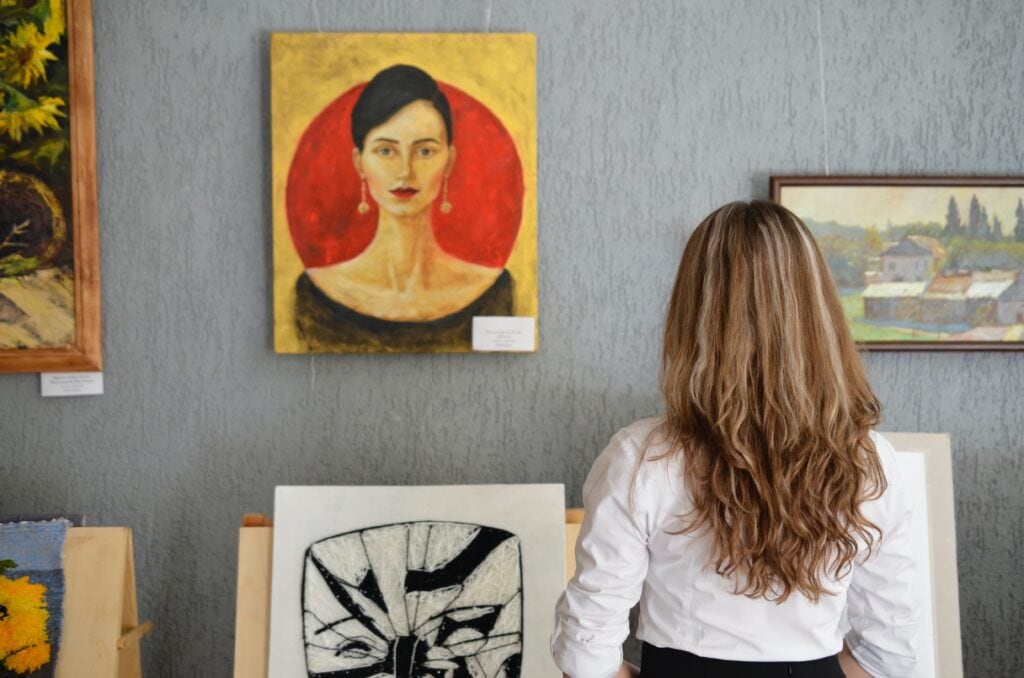
If you’ve landed on this section, you might be wondering how galleries go about selecting the artists they want to represent.
Based on Professional Artist Institute’s very own gallery representation expert, when gallery owners review an artist portfolio, they look for an emotional response to the work. If it’s interesting, engaging, and unique, they’ll start analyzing its appeal to their clientele.
Owners typically consider factors like the work’s similarity in aesthetic to other pieces, its price point, and whether it has a viable business model for showing the artist’s work.
In addition to evaluating the work, gallery owners consider if there’s a consistent body of work and if the artist can supply replacement artwork. They need to be confident they can market and build brand recognition for the artist.
While the owner evaluates an artist’s work quickly, they take some time to make decisions and consult with others before deciding to pursue representation.
Building Your Professional Artist Portfolio
Now that you have an idea of what gallery owners typically look for in an artist portfolio, you may be asking yourself, “So, how do I build a professional-looking portfolio?”
Let’s now dive into some tips to help you do just that! Follow these essential steps, and you’ll be well on your way to building an impressive artist portfolio that stands out from the crowd.

You can use Google Slides, PowerPoint, or Keynote. Choose the one that you are most comfortable with, and that allows you to create a professional-looking portfolio.

You may create your own template that includes sections for images of your artwork, a brief description of each piece, and your contact information. Make sure the template is easy to navigate and presents your work in a cohesive way.

Choose a selection of your artwork that represents your style and skills. Make sure the images are high-quality and showcase your work in the best possible light. You want to make a strong impression on potential galleries or clients.

Make sure your portfolio includes your name, email address, phone number, and website or social media handles. You want potential galleries or clients to be able to easily contact you if they are interested in your work.

Once you have created your portfolio, take the time to review and refine it. Make sure the images are properly aligned and the text is error-free. Consider having a friend or mentor review it as well.

Your portfolio should be a living document that you update regularly as you create new artwork. Keep it up-to-date and relevant to showcase your growth and progress as an artist.
A strong portfolio is key to getting your work noticed and landing gallery representation. Take your time in creating a polished and professional-looking portfolio that showcases your unique style and creative vision.
Should You Include Sold Works in Your Portfolio?
This might be another valid question you’re asking yourself, so here is the answer:
Including sold works in an artist portfolio is generally acceptable, but it is important to limit the percentage of sold works to 10-15%. This is to prevent overwhelming the gallery with too much work or giving the impression that there is no available work.
If some of the work is already displayed in other galleries, another 10-15%, or even 20%, can be included, but it is important to strike a balance so that the gallery doesn’t become frustrated with a limited selection.
When it comes to the pricing of sold works, it is recommended not to include prices for older pieces that would be priced higher if sold today. Instead, simply mark the piece as “sold” to avoid confusing the gallery with different price points.
Exploring the Format of Your Digital Artist Portfolio
Having a well-organized and visually appealing format is essential when creating an artist portfolio. It helps to draw the viewer’s attention to the artwork and allows for a better examination of the pieces.
A clean format with appropriate font size, image-to-text ratio, and color scheme can make a big difference in the presentation of the artwork and increase the chances of gaining representation in galleries.
Tips on Keeping Your Portfolio Clean and Simple







Creating an Effective Digital Portfolio
Let’s dive into some expert tips that will make your artwork shine and leave a lasting impression on anyone who views it. With these simple but effective tips, your portfolio is sure to stand out:

A well-designed cover image can set the tone for the entire portfolio and create a visual identity for you as an artist.

By increasing the size of the artwork images, you can maximize the use of white space and create a more visually appealing portfolio.

This can help create a personal connection between you and the viewer and showcase your process and personality.

Balancing the text with the visuals is important, so the font size should be small enough to fit all the necessary information but not so large that it detracts from the artwork.

Being selective and including only the best work that is relevant to the gallery or exhibition can help showcase your strengths.

Including titles, dimensions, and any relevant information about the materials or techniques used can help the viewer understand your vision and appreciate your work.
Landscape Vs Portrait Mode
Choosing between landscape or portrait mode for a digital portfolio comes down to optimizing the presentation of your work.
If the majority of your pieces are vertical, then portrait mode is ideal, but mixing the two is an option. The key is to keep it simple and choose the layout that best showcases your art.

At the end of the day, it’s important to consider the presentation circumstances and choose a format that optimizes the presentation of your artwork, whether it be portrait, landscape, or a combination of the two.
Multiple Portfolios for Different Bodies of Work: Necessary or Optional?
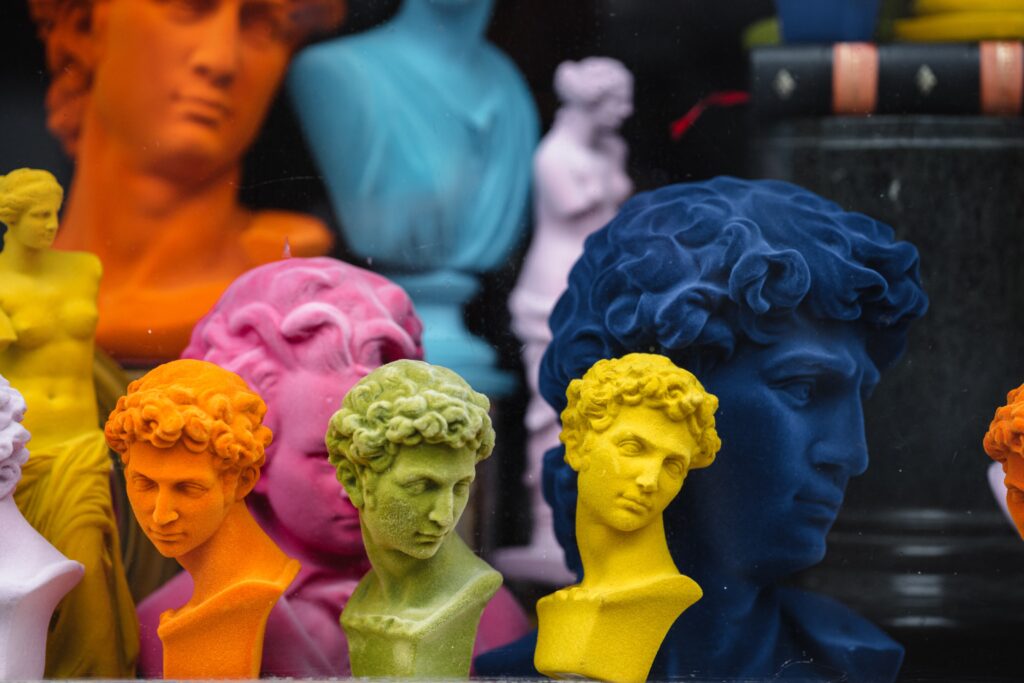
If you have a diverse range of work, separating it into different portfolios may be necessary to appeal to different audiences.
First off, it’s important to consider the specific type of gallery you’re targeting and cater the presentation to that audience.
However, if you have a distinctive look by virtue of your medium and technique, separating portfolios may not be necessary. Instead, consider using a divider page to separate different types of work within the same portfolio.
A well-designed portfolio can showcase a range of work while maintaining a cohesive brand. So, the decision to have different portfolios for different bodies of work ultimately depends on the degree of cohesiveness – do these portfolios belong together or not?
Creating an artist portfolio is a crucial aspect of the success of any fine artist. It’s a chance to showcase your creative vision, style, and technical abilities to potential clients, galleries, and employers.
With a well-crafted and visually appealing portfolio, you can make a lasting impression and stand out in a highly competitive industry.
Whether you opt for a printed, website, or digital portfolio, make sure it’s easy to navigate and presents your work in a cohesive and professional way.
Good luck!
If you would like to have access to portfolio templates and your own artist portfolio reviewed by a gallery owner, consider applying to our flagship program – the Professional Artist Accelerator.

